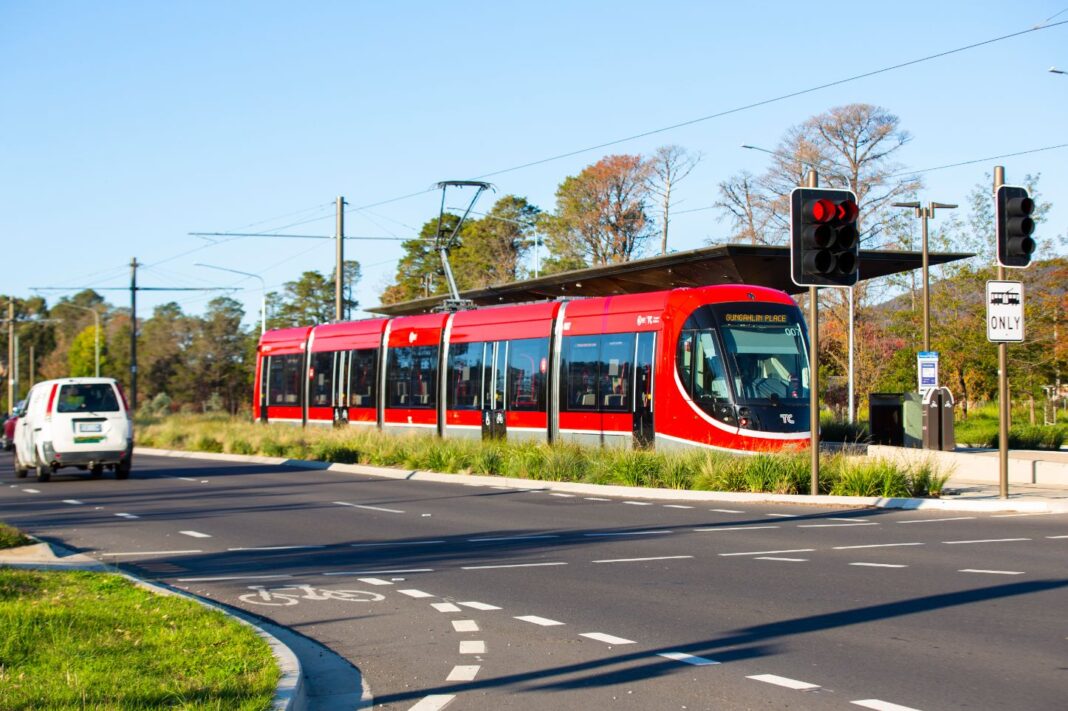A high speed rail link to Sydney, a light rail network connecting each of Canberra’s town centres, upgrades to the bike and footpath network, and fewer parking spaces to incentivise public and active transport are all on the agenda in the ACT Transport Strategy 2020.
Outlining the strategic vision for transport in Canberra over the next 20 years, the ACT Transport Strategy 2020 was released earlier this week.
Itoutlines broad plans for vast upgrades across Canberra’s bike path and footpath network, a light rail network connecting the town centres, the perennially proposed high speed rail link to Sydney, and a reduction in car parking spaces.
ACT Minister for Transport Chris Steel said the strategy prioritises planning and investment in public transport, walking and cycling infrastructure, and an effort to connect people with local and regional centres.
“A rebalancing of our investment will see more investment in public transport, but also active travel with improvements to cycleways and footpaths as a key way to make Canberra a more liveable city.
“Cars, and increasingly zero-emissions vehicles, will play an important role for Canberrans to get around and our focus will be to maintain our existing road network.”
The new Transport Strategy replaces the Government’s previous document, Transport for Canberra 2012-31, and was deemed necessary given the change Canberra has undergone in the last eight years.
The city has grown from a population of 356,000 in 2011 to over 420,000 in 2019 and is forecast to reach 580,000 by 2040.
Due primarily to population growth, Infrastructure Australia forecasts that by the 2030s the ACT and Queanbeyan will generate almost one-third more trips a day, up from the 1.3 million trips currently made across Canberra daily.
Of those trips, just under 1 million are by car; 185,000 walked trips; 85,000 on public transport; 35,000 trips on a bike; and 26,000 by other means, which includes motorcycles.
The Transport Strategy points forward to seven complementary plan documents that “will be developed to translate the Strategy into action”, including the Light Rail Masterplan, the Canberra Regional Rail Plan, and the Walking and Cycling Infrastructure and Promotion Plan.
There will also be an ACT Transport Recovery Plan which will identify “specific measures” to achieve a “sustainable and healthy transport transition” as we live through and emerge from the pandemic restrictions.
“An ACT Transport Recovery Plan will help facilitate a return to public transport, when the time is right, so that we can efficiently and sustainably move people around our growing city,” Mr Steel said.
Local cycling peak body, Pedal Power, welcomed the document, praising the fact it prioritises investment in “walking, cycling and public transport”.
“If the ACT Government can deliver on these commitments, it will be transformative for our city and will support a genuine shift towards greater participation in active travel,” Pedal Power CEO Ian Ross said.
Mr Ross supported the fact the document maps out development plans for Canberra’s path network but was “disappointed” that it doesn’t commit to any maintenance measures.
“These path enhancements can’t come fast enough. We look forward to seeing details of how these commitments will be delivered through the Walking and Cycling Infrastructure and Promotion Plan,” he said.
The Public Transport Association of Canberra (PTCBR) welcomed the Transport Strategy’s commitment to the development of a light rail spine along the high-demand routes between Canberra’s town centres.
However, PTCBR chair Ryan Hemsley expressed concern that the Strategy is “silent on the issue of measurable targets and accurate data to evaluate the success of the proposed approach”.
“Now might be a good time for the ACT Government to consider the establishment of an advisory group, comprising community representatives and experts in the transport industry, to assist in the ongoing delivery of key transport projects,” he said.
For more news stories:



